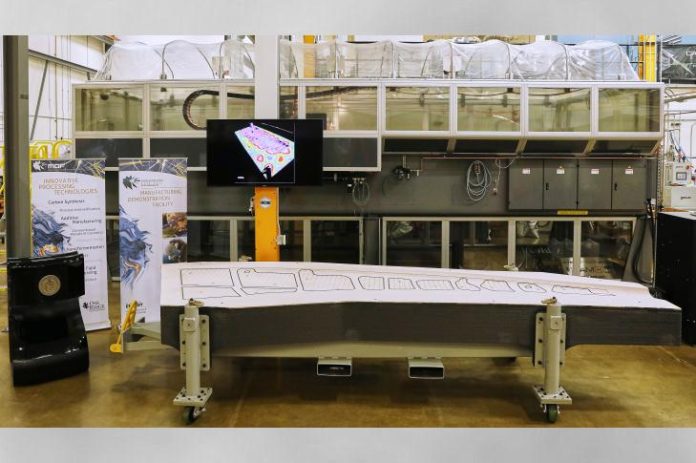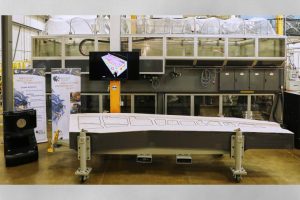
Researchers at the US Department of Energy’s Oak Ridge National Laboratory (ORNL) and Boeing have developed a 3D printed trim-and-drill tool which won the title of largest solid 3D printed item by Guinness World Record.

Image credit: www.ornl.gov
Composed of carbon fibre and ABS thermoplastic composite materials, ORNL’s lower cost trim took just 30 hours to print and is now set to be evaluated in building the Boeing 777X passenger jet.
According to the Laboratory, the 748kg tool is 5.3 metres long, 1.6 metres wide and 0.46 metres tall, which makes it comparable in length to a large sport utility vehicle.
To be certified as a new record, the tool had to be in one solid piece of 0.3cubic metres, which was confirmed by a Guinness World Records judge at an award ceremony held at the Manufacturing Demonstration Facility at ORNL, where the item was 3D printed on the Big Area Additive Manufacturing machine.
“The recognition by Guinness World Records draws attention to the advances we’re making in large-scale additive manufacturing composites research,” said Vlastimil Kunc, leader of ORNL’s polymer materials development team.
“Using 3D printing, we could design the tool with less material and without compromising its function.”
Once ORNL finalises verification testing, Boeing will use the 3d printed trim-and-drill tool in its new production facility in St Louis to secure the jet’s composite wing skin for drilling and machining before assembly.
Leo Christodoulou, Boeing’s director of structures and materials said the company will provide information back to ORNL on the tool’s performance over the course of the project.
“The existing, more expensive metallic tooling option we currently use comes from a supplier and typically takes three months to manufacture using conventional techniques,” Mr Christodoulou added.
“Additively manufactured tools, such as the 777X wing trim tool, will save energy, time, labor and production cost and are part of our overall strategy to apply 3D printing technology in key production areas.”
The project is supported by DOE’s Office of Energy Efficiency and Renewable Energy – Advanced Manufacturing Office (AMO), which supports applied research, development and demonstration of new materials and processes for energy efficiency in manufacturing as well as platform technologies for the manufacturing of clean energy products.
Additionally, AMO also provides support for ORNL’s Manufacturing Demonstration Facility, a public-private partnership to engage industry with national labs.




















